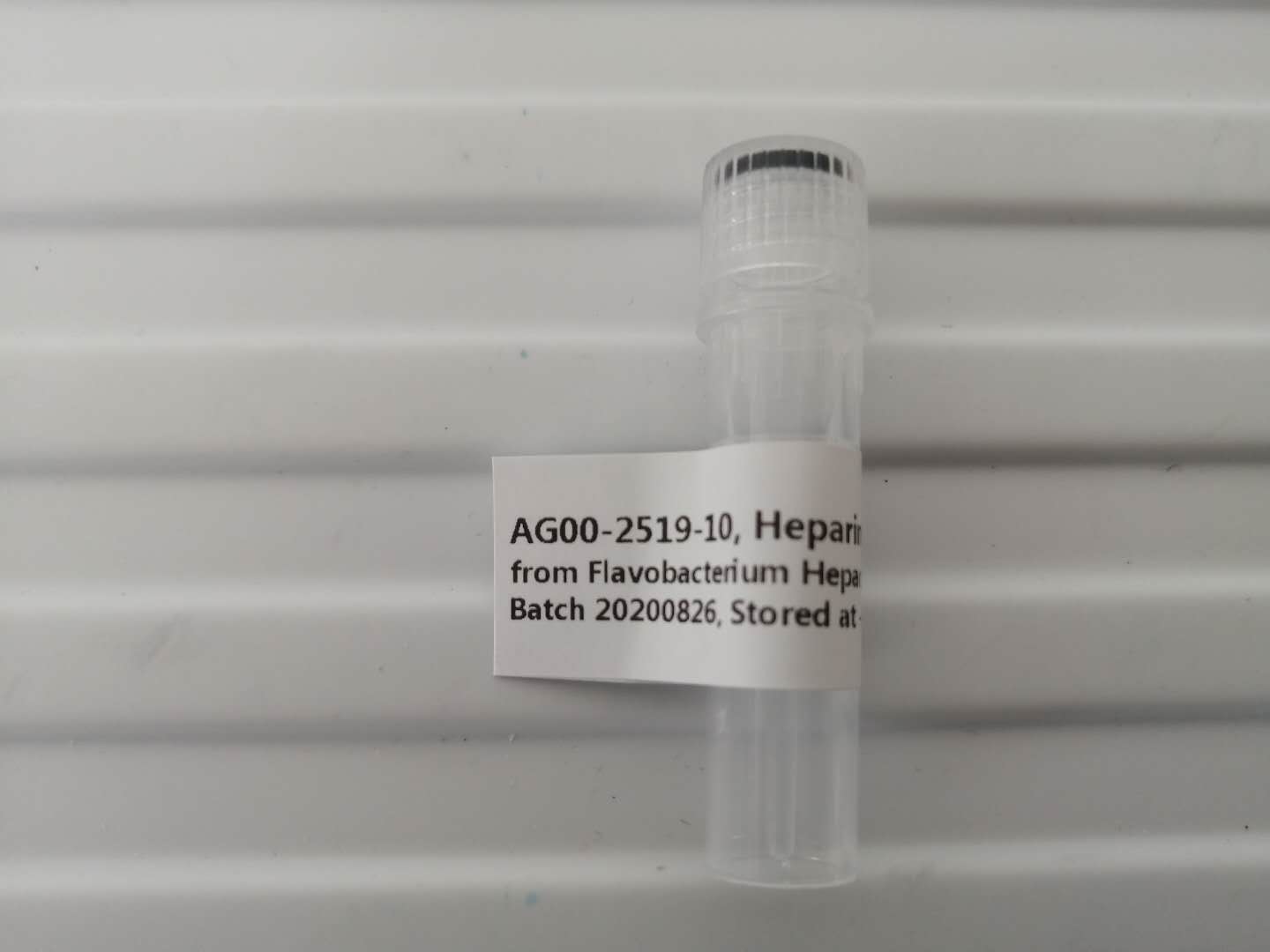Synonyms:Heparinase; heparin lyase I; heparin eliminase
Gene Source: Native Flavobacterium heparinum
EC Number: 4.2.2.7
CAS Number: 9025-39-2
MDL Number: MFCD00131317
Catalyzed Reaction: Heparinase I cleaves selectively, via and elimination mechanism, highly sulfated polysaccharide chains containing 1-4 linkages between hexosamines and O-sulfated iduronic acid residues. The reaction yields oligosaccharide products (mainly disaccharides) containing unsaturated uronic acids which can be detected by UV spectroscopy at 232 nm. The enzyme also cleaves the antithroombin III binding pentasaccharide domain in the heparin molecule.
Substrate Specificity: Heparin; heparan sulfate (specific activity with heparin is approx. 3 times higher than with heparan sulfate).
Properties
Molecular weight: 42.8 kDa
Isoelectric point: 9.3 – 9.5
pH optimum for activity: 7.4
pH range for activity: 4 – 9
Optimal temperature range: 20 ℃ – 37 ℃
Purity: ≥ 98 % by reversed phase HPLC analysis
Protein impurities: < 0.1%
Specific Activity: > 400 IU/mg (max. 417 IU/mg)
Concentration: 10 IU/mL
Standard: 0.1 IU, 1.0 IU, or customized standard
Unit Definition: One international unit (IU) of heparinase I is defined as the amount of enzyme that will liberate 1.0 μmole unsaturated oligosaccharides from porcine mucosal heparin per minute at 35 ℃ and pH 7.0.
Stability: Expiration of heparinase I is 12 months from manufacturing date, frozen at -20 ℃ in PBS.
Applications
Heparinase I is useful in many applications (usually with heparinase II and heparinase III) for example:
1. For the neutralization of heparin in blood and plasma samples before analysis.
2. For similar in vitro neutralization of low molecular weight heparins.
3. As integral part of in vitro diagnostic tests for the neutralization of heparin (blood clotting tests, platelet tests).
4. In blood collection tubes for the neutralization of heparin.
5. For the preparation of low molecular weight heparins from unfractionated heparin.
6. As a research reagent (glycosaminoglycan degradation)
7. For the preparation of disaccharides of heparin and the preparation of oligosaccharide libraries.
bio-equip.cn




